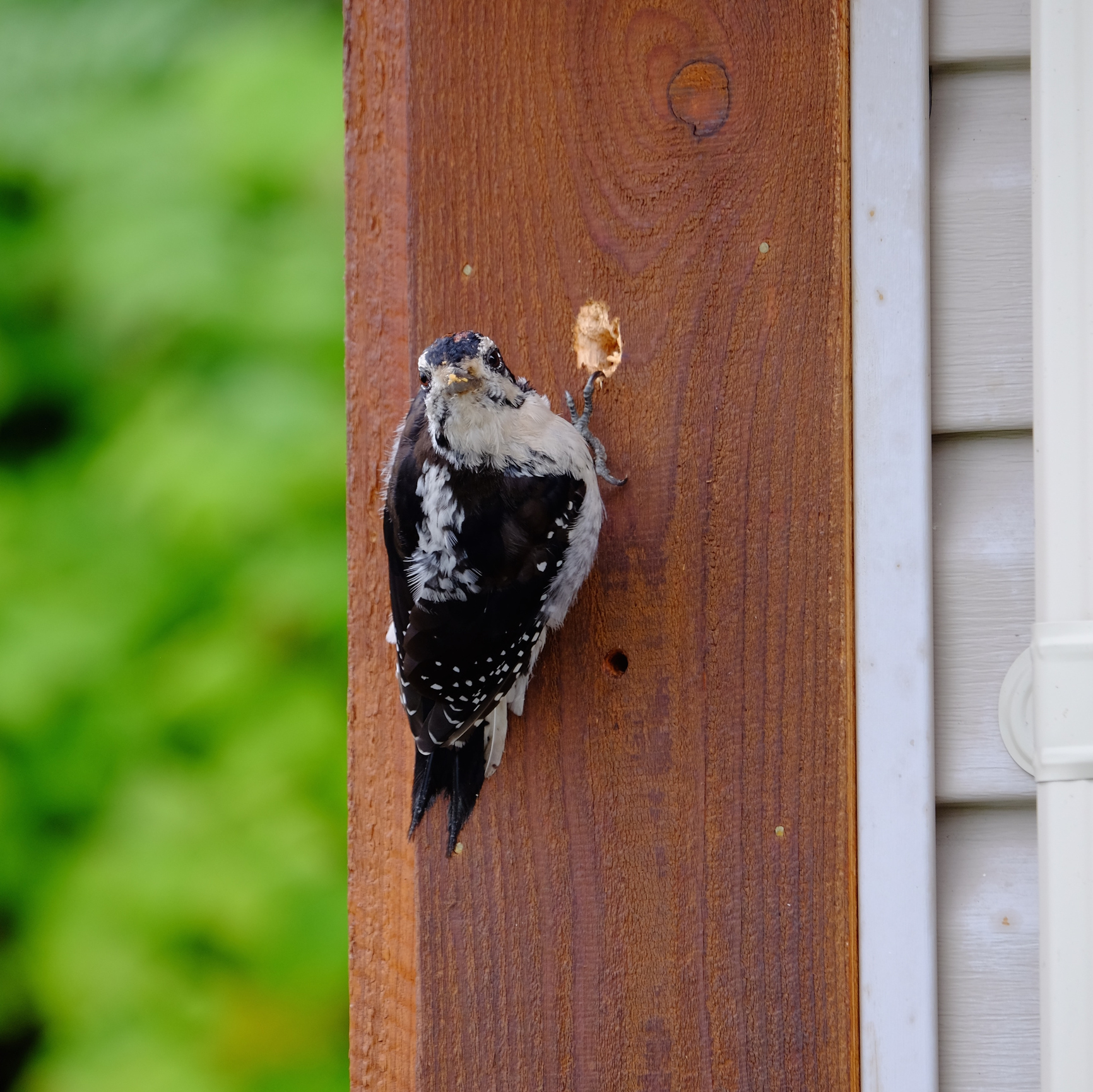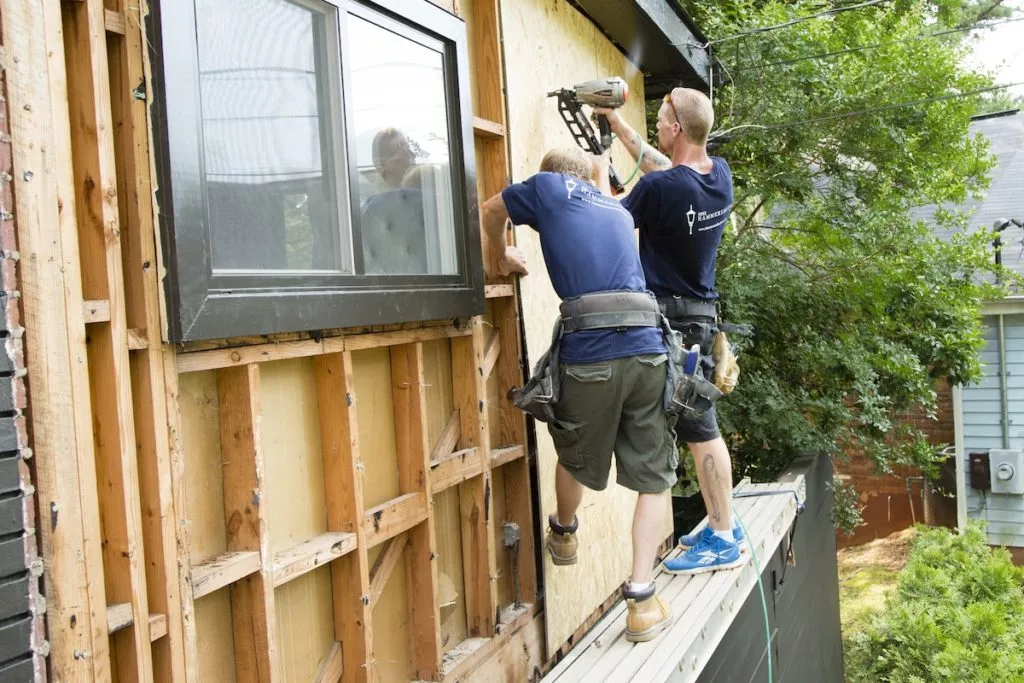However if the fascia boards of the house are made of wood they may sustain damage from woodpeckers drumming on the wood in which case there will be very small holes in clusters at specific points on the fascia boards.
Avoid making holes in wood siding.
Moisture causes wood rot and pests just love to burrow into decaying wood surfaces and of course the wood rot itself poses a major concern for the structural integrity of your walls and siding.
Houses with aluminum or vinyl siding are not typically prone to woodpecker damage.
Epoxy putty is a commonly recommended wood filler for use in repairing woodpecker damage.
That means caulking cracks filling in gaps putting screens over your roof vents and making sure there are no spaces in attic insulation that may allow a curious bird to enter.
Use a putty knife to force the filler inside the hole making sure to fill in the hole and to completely cover the opening.
Roof shingles with cracks or holes can be filled.
Use the putty knife to scrape away the excess then air dry and sand the putty before painting the patched area to match the rest of your siding.
Fill the siding holes with wood filler.
When woodpeckers start nesting you will want to remove any small holes or gaps in your house where they could set up a nest of their own.
Scrape away any excess with the putty knife when you re done and allow it to air dry.
But if you are not home all.




























